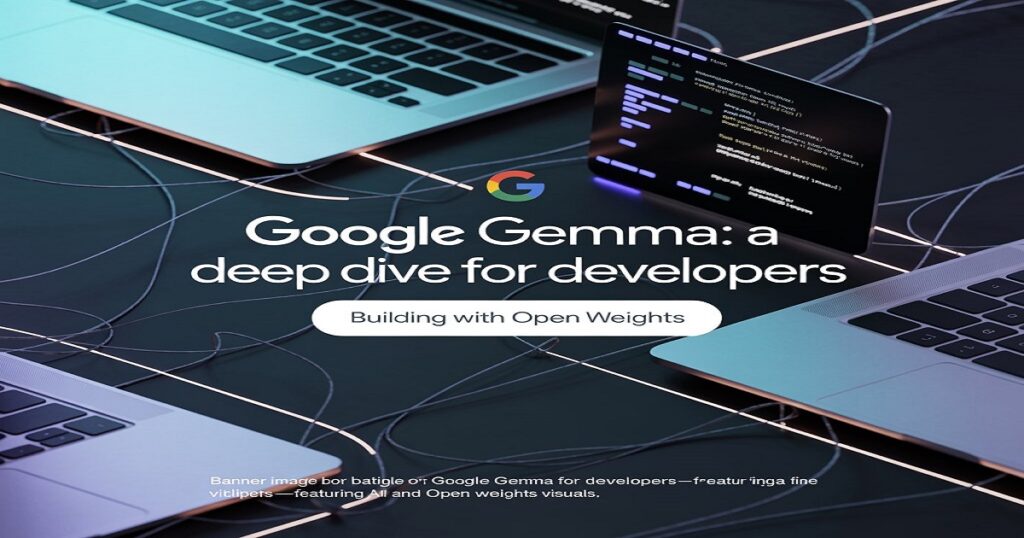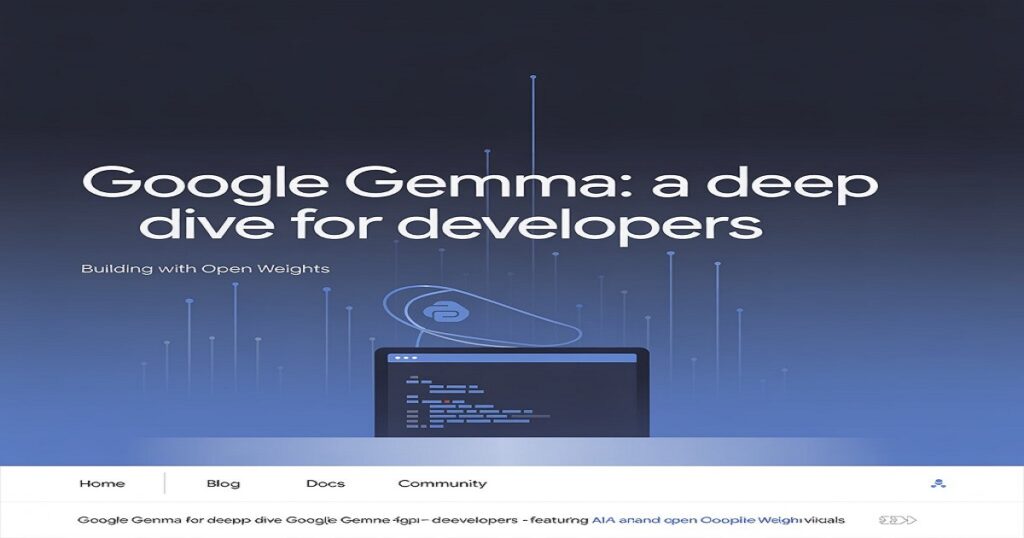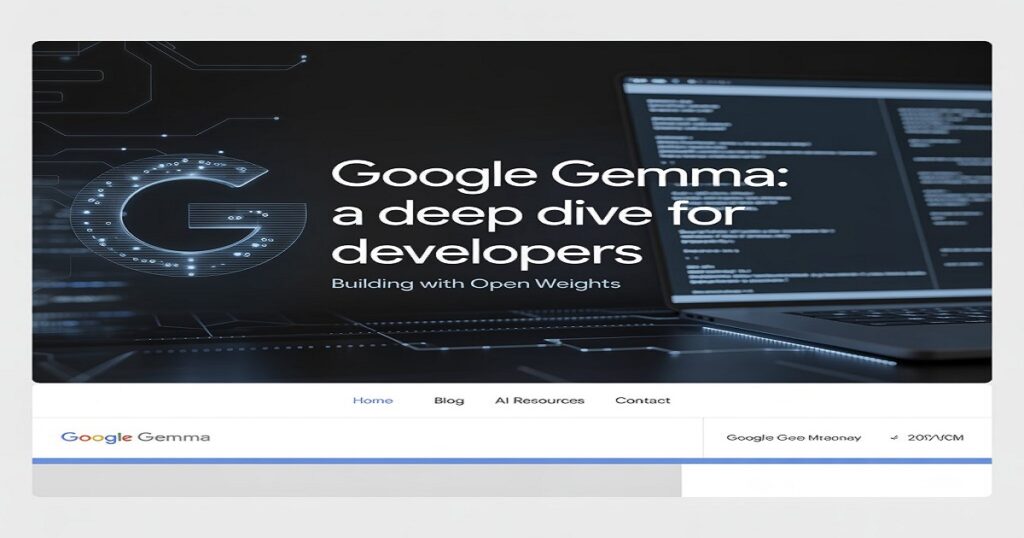Introduction: Accessible LLMs with Gemma
Google’s Gemma family of open-weight Large Language Models (LLMs) provides developers with a customizable alternative to closed-source options. This allows for greater control over model behavior, deployment, and data privacy. This article details Gemma’s capabilities and provides guidance for implementation.
Table of Contents
Open Weights: Customization and Control
Unlike API-driven LLMs, Gemma provides access to model weights – the core parameters defining its functionality. This enables:
- Customization: Fine-tune Gemma on specific datasets for improved task performance.
- Transparency: Inspect model parameters to understand decision-making processes.
- Deployment Flexibility: Deploy Gemma on your infrastructure, avoiding vendor lock-in.
- Research & Development: Experiment with model architecture and contribute to the open-source community.
Gemma is engineered for efficiency, offering competitive performance despite its relatively smaller size.
Gemma 2B vs. Gemma 7B: Model Selection

Gemma is available in two sizes: 2B and 7B parameters.
- Gemma 2B: Suitable for resource-constrained environments (edge devices, mobile applications). Offers faster inference speeds and is effective for basic tasks like sentiment analysis and simple question answering.
- Gemma 7B: Provides significantly improved performance on complex tasks (code generation, creative writing, reasoning). Requires more powerful hardware (GPUs recommended) and greater resource allocation.
Choose the model size based on performance requirements and available resources. Quantization techniques can optimize performance on limited hardware.
Use Cases & Applications
Gemma’s capabilities extend to a variety of applications:
- Code Generation: Generate code snippets in multiple languages, assist with debugging, and automate coding tasks.
- Content Creation: Generate text content for blogs, marketing materials, and scripts.
- Chatbots: Build conversational AI applications.
- Data Analysis: Extract insights and summarize large datasets.
- Personalized Learning: Develop adaptive learning experiences.
Getting Started: Implementation Resources

- Google Colab: Experiment with Gemma using pre-built notebooks in Google Colab. [Link to Google Colab Gemma examples]
- Vertex AI: Deploy Gemma models at scale using Google’s Vertex AI platform. [Link to Vertex AI Gemma documentation]
- Hugging Face: Integrate Gemma with open-source tools and libraries via Hugging Face. [Link to Hugging Face Gemma models]
- Fine-tuning: Improve performance on specific tasks through fine-tuning. LoRA (Low-Rank Adaptation) offers an efficient fine-tuning approach.
Responsible AI Considerations
Gemma incorporates safety features to mitigate potential risks like bias and misinformation. However, developers are responsible for evaluating and addressing potential unintended behaviors in their applications. Refer to Google’s Responsible AI resources for guidance. [Link to Google’s Responsible AI resources]
Future Development

Continued development of the Gemma family is expected, including larger models, enhanced capabilities, and improved safety features. The open-weight approach fosters innovation within the AI community.
Explore Gemma and begin development using the resources linked below.
[ Explore Gemma on Google Colab]
[Click here to learn More about other AI on our website]
Frequently Asked Questions: Google Gemma for Developers
Q: What is Google Gemma?
Gemma is a family of open-weight Large Language Models (LLMs) developed by Google. Unlike closed-source models, Gemma provides access to the model weights, allowing for customization, transparency, and deployment flexibility.
Q: What does “open-weight” mean?
Open-weight means you have access to the numerical parameters that define the model’s behavior. This contrasts with closed-source models where you only interact through an API. Open weights enable fine-tuning, inspection, and deployment on your own infrastructure.
Q: Is Gemma free to use?
The Gemma model weights are freely available. However, costs may be associated with the infrastructure required to run the models (e.g., cloud compute, GPUs) and any services used for deployment (e.g., Vertex AI).
Q: What licenses govern the use of Gemma?
Gemma is released under a license that permits commercial use with certain restrictions. Review the specific license terms for details. [Link to Gemma License]
Model Specific Questions
Q: What’s the difference between Gemma 2B and Gemma 7B?
Gemma 2B is a smaller model suitable for resource-constrained environments. Gemma 7B is larger and offers significantly improved performance on complex tasks but requires more computational resources.
Q: Which Gemma model should I choose for my project?
Consider your performance requirements and available resources. Start with Gemma 2B for prototyping and experimentation. If you need higher accuracy and can provide the necessary hardware, use Gemma 7B.
Q: Can I combine Gemma with other models or frameworks?
Yes. Gemma is designed to be integrated with popular open-source tools and libraries like Hugging Face Transformers.
Implementation & Deployment
Q: What hardware do I need to run Gemma?
Gemma 2B can run on CPUs, but performance will be limited. Gemma 7B benefits significantly from GPUs. The specific GPU requirements depend on your desired inference speed and batch size.
Q: What’s the easiest way to get started with Gemma?
Google Colab provides a convenient environment for experimentation with pre-built notebooks. [Link to Google Colab Gemma examples]
Q: Can I deploy Gemma on my own servers?
Yes. Because you have access to the model weights, you can deploy Gemma on your own infrastructure.
Q: How can I fine-tune Gemma for my specific task?
Fine-tuning involves training Gemma on a dataset specific to your task. Tools like LoRA (Low-Rank Adaptation) can make fine-tuning more efficient.
Responsible AI & Safety
Q: Are there any safety concerns with using Gemma?
Like all LLMs, Gemma can potentially generate biased, toxic, or misleading content. Developers are responsible for evaluating and mitigating these risks in their applications.
Q: What resources are available to help me build responsible AI applications with Gemma?
Google provides resources and guidelines on responsible AI development. [Link to Google’s Responsible AI resources]
Troubleshooting & Support
Q: Where can I find documentation for Gemma?
Google provides documentation on Vertex AI and other platforms where Gemma is available. [Link to Vertex AI Gemma documentation]
Q: Is there a community forum or support channel for Gemma?
Check the Hugging Face Gemma model page and Google’s AI developer resources for community forums and support channels. [Link to Hugging Face Gemma models]

